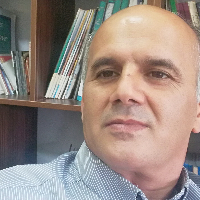The Relationship Between Gender, Marital Status and the Way of Applying Power in Family and Religiosity in University Students of Mazandaran
Author(s):
Article Type:
Research/Original Article (دارای رتبه معتبر)
Abstract:
Introduction
Religion as an important social institution plays significant roles in the society. According to Auguste Comte, religion is human need, because it is a factor of unity, altruism and legitimacy. Max Weber mentions institution of religion as a community leader, and Émile Durkheim believes religion has function for societies (Nayebi and Azadarmaki, 2007). This institution has knitted to all parts of people's life in society of Iran and has led to significant evolution such as Islamic revolution in 1979 (Taleban and Rafieibehabadi, 2010). Also, a hard attempt has been done in order to develop religiosity in Iran especially among youth (Tajbakhsh and Mousavi, 2014). So, this study is trying to investigate the rate of religiosity and related factors among university students of Mazandaran with six questions: How is the rate of religiosity among university students of Mazandaran? How is the way of applying power in family among students? Authoritarianism or democratic? Is there any relationship between the way of applying power in family and religiosity of students? Is there any significant differences between religiosity of male and female students? Is there any significant differences between religiosity among married and single students? What are the predictor variables of religiosity among students?
Material & Methods
407 male and female university of Mazandaran students in 15 classes has been sampled by cluster random sampling and answered to the measure of methods of applying power in the family (Khoshfar and Mohammadi Nia, 2014) with two dimensions and the measure of religiosity (Gelark and Stark, 1965) with four dimensions.
Discussion of Results & Conclusions
The result shows most of participants were female (female = 73%, male =22, no answer = 5%). This result is in line with reports that clear more university students are female in Iran (Mirdar, 2014). Also, results show students religious score were 38 to 119 (Mean = 58.11, SD= 12.41), and more participants were with high rate of religiosity (%54.3), this result is in line with Nayebi and Azadarmaki (2007) that clear Iran as a religious society. Moreover, score of democratic method was 8 to 30 (Mean=22.2, SD = 4.19) and score of the authoritarianism method was 7 to 35 (Mean=18.10, SD =5.18). Results show in more family (59.46%), score of the authoritarianism method was high, this result is consistent with Iran's patriarchal system. Moreover, results show score of authoritarianism method and democratic method are reported more by female than male. Mean of authoritarianism method (female = 19.79, male = 17.60) and democratic method (female = 22.39, male = 20.77). To justify can be say, male and female are different in psychological, biological and their experience of social environment. Also, according the results, no significant differences between both genders in university has been shown, male (Mean = 83.20) and female (Mean = 85.68), but married students were more religious than single ones. Mean of score of religious among married students were 89.14, but among single were less (84.10). For justification can be say married students normally have more social activity than single ones (Mohsenitabrizi, Abbasighadi and Kamari, 2007), and some social activity is linked to religiosity, so this activity show married person more religious than single person. Furthermore, results show a significant relationship between democratic method in family and religiosity among participants (r = 0.24, p = 0.00), and a significant relationship between authoritarianism method in family and religiosity among participants (r= 0.17, p=0.00). Based on this result, the correlation coefficient of democratic method is more than authoritarianism method. To justification can be say, family has important effect on religious Identity of children, so humiliation of children by authoritarianism method in family pushes children to revolt against family value such as religiosity (Nourbahksh and Oveysifardouyi, 2016). Also, based on learning theories, children learn all social value. So, in family with more democratic method, parents have more emotional relationship with children, then children more follow their parent and their social value such as religiosity (Dudley and Wisbey, 2000). Finally, according the stepwise regression coefficients, democratic method, authoritarianism method and marital status variables predict 13 percent of variance of religiosity.Keywords:
Religiosity , Students , Marital Status , Democracy , Gender
Language:
Persian
Published:
Journal of Applied Sociology the University of Isfahan, Volume:30 Issue: 2, 2019
Pages:
29 to 45
magiran.com/p1979628
دانلود و مطالعه متن این مقاله با یکی از روشهای زیر امکان پذیر است:
اشتراک شخصی
با عضویت و پرداخت آنلاین حق اشتراک یکساله به مبلغ 1,390,000ريال میتوانید 70 عنوان مطلب دانلود کنید!
اشتراک سازمانی
به کتابخانه دانشگاه یا محل کار خود پیشنهاد کنید تا اشتراک سازمانی این پایگاه را برای دسترسی نامحدود همه کاربران به متن مطالب تهیه نمایند!
توجه!
- حق عضویت دریافتی صرف حمایت از نشریات عضو و نگهداری، تکمیل و توسعه مگیران میشود.
- پرداخت حق اشتراک و دانلود مقالات اجازه بازنشر آن در سایر رسانههای چاپی و دیجیتال را به کاربر نمیدهد.
دسترسی سراسری کاربران دانشگاه پیام نور!
اعضای هیئت علمی و دانشجویان دانشگاه پیام نور در سراسر کشور، در صورت ثبت نام با ایمیل دانشگاهی، تا پایان فروردین ماه 1403 به مقالات سایت دسترسی خواهند داشت!
In order to view content subscription is required
Personal subscription
Subscribe magiran.com for 70 € euros via PayPal and download 70 articles during a year.
Organization subscription
Please contact us to subscribe your university or library for unlimited access!


